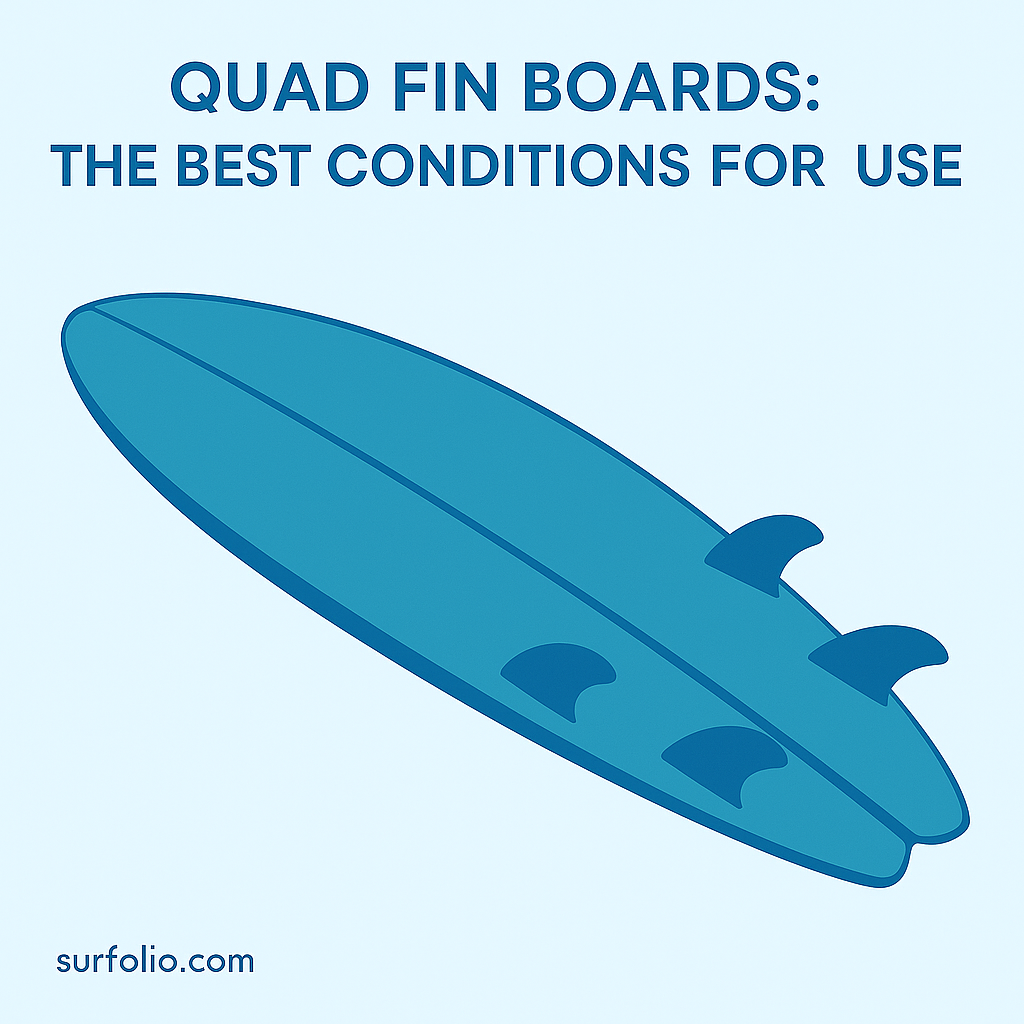
Understanding Quad Fin Setups
Quad fins are the sweet spot between speed and control — a fin setup that offers fast, drivey performance without the drag of a center fin. Positioned with two fins on each rail, this configuration provides a perfect balance of hold and release, making it a favorite among modern surfers who want versatility across different conditions.
While quads might look similar to thrusters at first glance, they ride quite differently. Without the center fin creating drag, quads glide faster down the line and generate natural acceleration through turns, which can be a huge advantage when surfing weaker or more hollow waves.
How Quad Fins Work
The key to a quad’s performance lies in hydrodynamics. The two rear fins help channel water toward the tail, creating forward thrust. This gives quads a looser, skate-like feel while still maintaining plenty of hold when needed.
Characteristics of a Quad Fin Setup
- Increased speed: Less drag equals faster acceleration.
- More hold in hollow waves: The rail-to-rail fin placement provides stability when the board is on edge.
- Responsive turning: Great for sharp, sweeping maneuvers.
- Looser feel in smaller waves: Ideal for generating speed in weaker surf.
The Best Conditions for Quad Fin Boards
1. Fast, Down-the-Line Waves
Quads excel in clean, fast-breaking waves, where maintaining speed through long walls is crucial. The lack of a center fin reduces resistance, allowing you to cover more ground and stay ahead of the breaking section.
Best Spots: Point breaks and reef breaks where waves peel consistently — think Malibu, Jeffreys Bay, or Rincon.
2. Hollow or Tubing Waves
In barreling surf, quad setups offer better hold and control when locked into the face. The rail fins dig in, keeping the board stable and tracking smoothly through the tube.
Best Spots: Shallow reef breaks or hollow beach breaks where precision matters, like Teahupoʻo or Hossegor.
3. Small, Mushy Waves
Quads aren’t just for powerful surf — they shine in weak conditions too. The added speed helps you pump through flat sections and keep momentum where thrusters might bog down.
Best Spots: Summer beach breaks or softer point waves with minimal power.
4. Surfers Who Love Flow and Drive
If your style leans toward smooth carves and down-the-line surfing, a quad will match your rhythm perfectly. It offers the glide of a twin fin with the control of a thruster, ideal for surfers who like to connect long arcs rather than abrupt turns.
When Not to Use a Quad
While quads are incredibly versatile, they’re not perfect for every condition.
- They can feel too loose for vertical maneuvers in steep, critical sections.
- Some surfers prefer the predictability of a thruster when performing top-to-bottom turns.
- In choppy conditions, quads may feel skittish due to less drag and more lift.
Popular Quad Fin Board Designs
- Fish and Hybrid Boards: Combine the speed of a twin with added control.
- Performance Shortboards: Designed for versatility in variable conditions.
- Step-Ups: For larger surf where hold and drive are essential.
Pro Tip: Experiment with Fin Placement
Fin positioning affects how a quad rides. Moving the rear fins closer to the tail enhances control, while moving them forward increases looseness. Don’t be afraid to mix and match fin templates to find your ideal feel.
Final Thoughts
Quad fins bridge the gap between the smooth flow of a twin fin and the precision of a thruster. Whether you’re chasing speed in small surf or holding steady in hollow barrels, a quad setup can bring out the best in your surfing. The key is knowing when to use it — and once you do, you’ll see why many surfers never go back.
